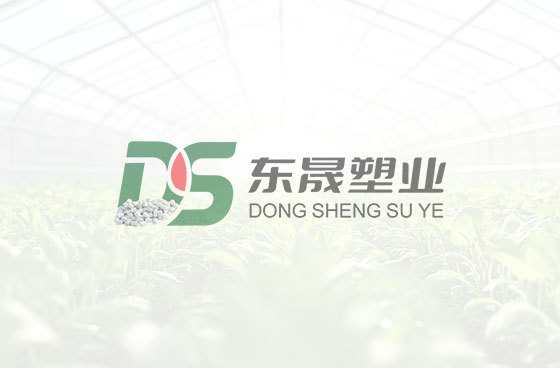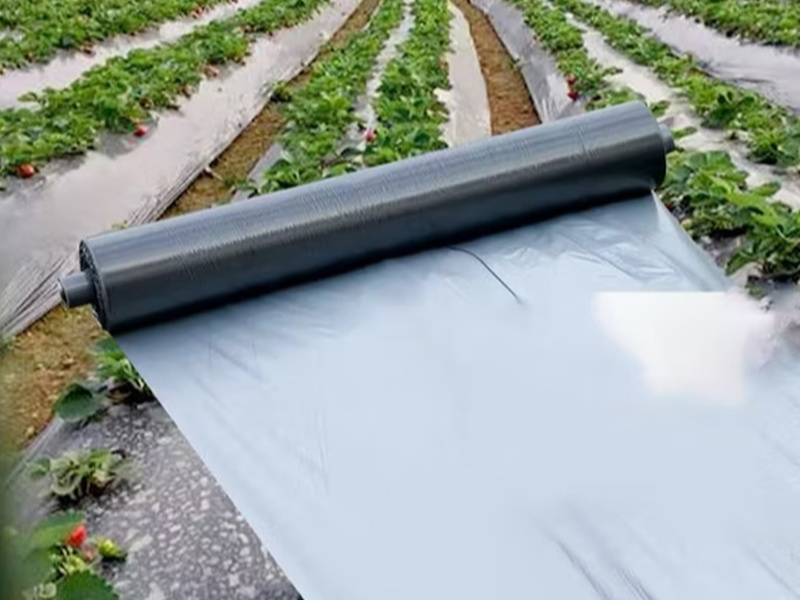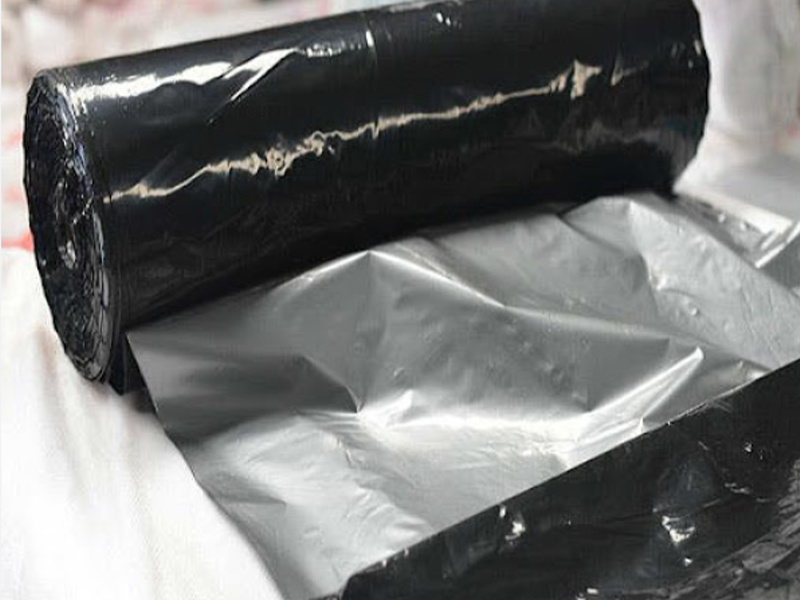Detailed introduction of silver-gray mulch film
Publish Time:
2025-06-24
Silver-gray mulch film is a type of agricultural covering film with special color and functions, named for its silver-white or silver-gray surface. It combines multiple properties such as reflection, heat absorption, and pest control, and is widely used in agricultural production. The following is a detailed introduction to silver-gray mulch film:
I. Material and Structure
Main Material: Made of polyethylene (PE) as the base material, with reflective pigments (such as aluminum powder), anti-aging agents, and insulation agents added and blown into shape.
Characteristics:
Strong Reflectivity: The silver-gray surface reflects ultraviolet and visible light, reducing ground heat absorption and lowering ground temperature.
Thickness: Common thicknesses are 0.006-0.012 mm, selectable according to crop needs.
Service Life: Typically 3-6 months, needs adjustment based on the usage environment and crop cycle.
II. Core Functions
1. Reflective Cooling
Sunlight Reflection: The silver-gray surface can reflect 60%-80% of sunlight, lowering the ground temperature (2-5℃ lower than transparent film), suitable for high-temperature seasons or cool-loving crops.
Reduced Burns: Reflected light evenly illuminates the lower leaves and fruits of crops, avoiding sunburn caused by direct strong light (such as sunburn on watermelon and tomato fruits).
2. Pest Repellent
Repelling Aphids and Thrips: Silver-gray has a repellent effect on aphids, etc. (aphids are sensitive to the silver-gray spectrum), reducing the spread of viral diseases (such as cucumber mosaic virus) and lowering the incidence of pests.
Weed Suppression: The reflective properties weaken the photosynthesis of weeds, suppressing weed growth (more effective than black film, but slightly less than weed-control film).
3. Soil Environment Regulation
Maintaining Soil Moisture: Reduces water evaporation, maintains soil moisture, and lowers irrigation frequency.
Improving Soil Structure: Suppresses soil compaction, promotes root respiration and nutrient absorption.
4. Improving Crop Quality
Promoting Coloring: Reflected light enhances the illumination of the bottom of the fruit, promoting uniform coloring of the fruit (such as grapes and apples).
Improving Taste: The cooling effect is suitable for root and tuber crops (such as radishes and potatoes), avoiding quality degradation caused by high temperatures.
III. Applicable Crops and Scenarios
1. Vegetables
Solanaceous Vegetables: Tomatoes, eggplants, peppers, etc., can lower the temperature in the greenhouse, reduce viral diseases and sunburn, and promote fruit coloring.
Melon Crops: Watermelon, cantaloupe, cucumber, etc., repel aphids and reduce virus transmission; reflection promotes increased sugar content in fruits.
Leafy Vegetables: Lettuce, celery, etc., cool-loving crops, covering in summer can lower temperature and retain moisture, extending the growing period.
2. Fruits
Grapes: Laying between rows or under racks, reflected light promotes uniform coloring of fruit bunches, improving marketability.
Strawberries: Reduces aphid damage, lowers the humidity conditions for gray mold, and the reflection makes the fruit color brighter.
Fruit Tree Seedlings: Covering in summer can protect seedlings from sunburn and promote root development.
3. Cash Crops
Chinese Herbal Medicines: Such as ginseng and notoginseng, shade-loving crops, using reflective properties to create a semi-shaded environment, avoiding direct strong light.
Flowers: Cut chrysanthemums, lilies, etc., cooling in summer can extend the flowering period and reduce pests and diseases.
IV. Advantages and Disadvantages Comparison
|
Advantages |
Disadvantages |
|
1. Reflective cooling, suitable for high-temperature seasons |
1. The warming effect is weaker than transparent film; use with caution in early spring. |
|
2. Repels aphids and thrips |
2. The cost is higher than ordinary film (approximately 10%-20% higher) |
|
3. Suppresses weed growth |
3. The film surface easily adsorbs dust, affecting reflectivity. |
|
4. Improves fruit coloring and quality |
4. Slightly more difficult to recycle (dust needs to be cleaned promptly) |
V. Usage Precautions
Laying Time:
Summer Coverage: Best effect in high-temperature seasons (such as May-September); other warming measures are needed in early spring when the temperature is low.
Avoid Covering Too Early: Low temperatures may lead to insufficient ground temperature, affecting crop germination.
Laying Method:
Level Ground: Land preparation needs to be meticulous to avoid soil clods puncturing the film.
Tighten and Compact: The film needs to adhere tightly to the ground, and the edges should be pressed down with soil to prevent wind from blowing it up.
Drip Irrigation Combination: Can be combined with drip irrigation tapes to improve water and fertilizer utilization efficiency.
Maintenance and Recycling:
Regular Cleaning: Use a soft cloth or spray water to clean the dust from the film surface to maintain the reflective effect.
Timely Recycling: After harvesting, the remaining film should be recycled as soon as possible to avoid soil pollution (the film is considered white pollution and needs to be disposed of centrally).
VI. Comparison with Other Films
|
Type |
Light Transmittance |
Effect on Soil Temperature |
Weed Control Ability |
Insect control effect |
Applicable scenarios |
|
Transparent film |
80%-90% |
Significant warming |
Weak (weeds grow easily) |
None |
Early spring warming, fast-growing crops |
|
Black film |
Below 10% |
Cooling / Warming |
Strong |
None |
Summer cooling, severely weedy plots |
|
Silver-gray film |
30%-50% |
Cooling |
Moderate |
Repels aphids |
High temperature season, crops requiring pest control |
Summary
Silver-gray film is an ideal choice for high-temperature seasons and pest control needs, especially suitable for Solanaceae, Cucurbitaceae, fruit trees, and cool-season crops. Its reflective, cooling, and pest-repelling properties can significantly improve crop quality and yield, but it should be noted that the cost is higher and cleaning and maintenance are necessary. In practical applications, the type of film can be flexibly selected or used in combination (e.g., silver-gray film + transparent film combination) according to the crop type, season, and cultivation goals to achieve the best results.
BLOGS

Unveiling the Power of Black&Silver Color Plastic Mulch Films in Agriculture
Discover how Black&Silver Color Plastic Mulch Films can revolutionize your farming strategy. Learn about their benefits and applications.

Unlocking the Benefits of Black Embossed Mulch Film in Modern Agriculture
Explore the latest trends and advantages of using black embossed mulch film in agriculture.

Unlocking the Secrets of Black&Silver Color Plastic Mulch Films
Discover the benefits and applications of Black&Silver Color Plastic Mulch Films in gardening and agriculture.

Unlocking the Secrets of Black Embossed Mulch Film in Modern Agriculture
Discover how Black Embossed Mulch Film is revolutionizing farming practices and enhancing crop yields.

Mastering Strawberry Planting Skills for a Bountiful Harvest
Unlock the secrets of effective strawberry planting skills and enjoy a thriving garden full of juicy strawberries!

The Wonders of Black Embossed Mulch Film: A Gardener's Best Friend
Discover how black embossed mulch film can revolutionize your gardening experience. Learn tips and benefits!









